Multi-Stack Adaptive Power Allocation Method Considering Fuel Cell Aging
-
摘要:
为延长多堆燃料电池系统(multi-stack fuel cell system,MFCS)使用寿命,保证运行过程中各电堆总体退化性能逐渐趋于一致,针对大功率质子交换膜燃料电池(proton exchange membrane fuel cell, PEMFC)系统,提出了一种考虑电堆老化的MFCS自适应功率分配方法. 在MFCS运行过程中,由于燃料电池输出功率会随不同运行条件而动态变化,导致每个电堆老化程度通常不一致,因此提出量化指标电压退化程度(voltage degradation degree,VDD)来表征燃料电池在运行过程中电堆的老化程度;还采用燃料电池半经验模型来模拟老化对电堆性能的影响;最后,通过RT-LAB搭建硬件在环(hardware-in-the-loop,HIL)测试平台,与原有的功率分配方法做比较. 结果表明:该方法能协调各燃料电池出力,减缓电堆老化速率;相较于平均功率分配方法和链式功率分配方法在MFCS的氢耗量上分别降低了13.59%和8.04%.
Abstract:In order to extend the service life of the multi-stack fuel cell system (MFCS) and ensure that the overall degradation performance of each stack during operation gradually tends to be consistent, an MFCS adaptive power allocation method is proposed for the high-power proton exchange membrane fuel cell (PEMFC) system, which can take into account the aging of the stack. During the MFCS operation, the fuel cell output power dynamically changes according to different operating conditions, which causes the aging degree of each stack to be generally inconsistent. Therefore, the voltage degradation degree (VDD) is introduced to characterize the aging degree of the fuel cell stack during operation. In addition, a semi-empirical fuel cell model is also used to simulate the effect of aging on stack performance. Finally, a hardware-in-the-loop (HIL) test platform is built on RT-LAB. The proposed method is compared with the average and chain power allocation methods. The results show that the proposed method can coordinate the output of each fuel cell to slow down the aging rate of the stack, and reduce the hydrogen consumption of MFCS by 13.59% and 8.04% respectively.
-
目前,化石资源减少而能源消耗大增导致新型能源的开发越来越受到各国支持[1]. 氢能作为安全、可持续的新型能源,其应用前景最为广泛[2]. 燃料电池作为一种将化学能转化为电能的转置,以其能量转换效率极高并且无污染已经受到国内外学者们的广泛研究[3]. 其中,有一类被称为质子交换膜燃料电池(proton exchange membrane fuel cell,PEMFC)的性能优异,在交通、军事等领域得到广泛运用 [4-5]. 但是,目前大功率燃料电池由于技术和材料尚未完全突破,存在价格高、率燃料电池老化快、无法长期运行等缺点[6]. 为了解决这些问题,人们常采用多堆燃料电池系统(multi-stack fuel cell system,MFCS)来满足大功率的需求问题. MFCS是由几套低功率燃料电池系统组成,而不是只由一个大功率燃料电池构成,避免了率燃料电池耐久性不足,增强了系统的稳定性[7].
目前,对MFCS的研究较少,且大部分的研究都是为优化系统中某一项指标(如效率、氢气消耗等). 文献[8]针对燃料电池存在的输出功率有限等缺点,重点研究了并联拓扑结构下的MFCS运行特性,提出了一种基于功率自适应分配的多堆燃料电池系统效率协调优化控制方法,以合理的功率分配使系统整体效率达到最优,保证大功率车辆用MFCS的高效、平稳运行. 文献[9]为优化MFCS输出效率、减少氢耗,提出了一种KKT (Karush-Kuhn-Tucker)条件的约束优化算法. 文献[10]通过设计DC/DC变换器并加以控制策略维持MFCS中每个燃料电池在最大功率点运行. 这些研究虽然在某些方面能获得较好的结果,却没有考虑燃料电池(后文简称电堆)老化问题. 大部分关于MFCS的研究都是基于电堆的性能不发生退化且均为同种类型的假设下进行实验验证的,但实际上电堆会在长期运行环境中受到如操作环境、负载、电堆运行参数等因素的影响造成电堆催化剂活性面积减小、膜电极阻抗增大等[11]. 因此,采用有效的控制策略抑制老化加重,保证多堆燃料电池尽可能长久运行是亟须解决的问题. 为了更真实地反映电堆运行性能的变化,研究中应该考虑电堆老化模型,并且借助老化模型实时监控电堆运行过程中的老化速率[12]. 此外,文献[13]表明,电堆在负载工况不断变化下运行时间越长,性能老化越快. 因此,为了提高电堆的性能,其输出功率波动率应尽可能小[14].
总之,目前针对电堆老化问题对MFCS功率分配的控制研究还较少,大部分研究都集中在系统结构和变换器拓扑上[15]. 此外,虽然有少数论文研究了MFCS的功率分配方法,但关注点是系统效率和氢气消耗. 为了减缓MFCS的老化速度,维持各电堆间总体退化性能的一致性,促进电堆在大功率场合的应用,提出一种考虑电堆老化的自适应功率分配方法,并分析电堆老化程度不同对功率分配的影响. 此外,为了分析电堆运行过程中的老化速率,设计一种电堆老化模型,并提出一种衡量运行过程中电堆老化程度的评估指标电压退化程度(voltage degradation degree,VDD). 最后,通过RT-LAB搭建了半实物硬件在环(hardware-in-the-loop,HIL)仿真平台,验证本文所提自适应功率分配方法的有效性和实用性.
1. MFCS拓扑结构
为提高电堆输出功率一般采用MFCS并且多堆系统可更好地保证供电稳定. 当多堆共同投入工作时,及时调节各电堆的输出功率分配,可有效地提高电堆的耐久性和使用寿命. 目前,常用的MFCS拓扑结构主要有串联和并联两种形式,如图1所示. 同时,为维持供电电压的稳定,此类结构通常会级联DC/DC变换器[16].
串联结构如图1(a)所示,该结构简单只需要通过一个单向DC/DC变换器与母线相连来匹配电压的不平衡,但是这类结构无论是电堆故障还是DC/DC变换器故障均会导致系统崩溃,影响系统稳定性. 并联结构如图1(b)所示,每个电堆连接一个DC/DC变换器,这种结构既可分立成单堆独立运行和控制,也可以共同投入保持多堆同时运行,有利于提高MFCS整体的稳定性和可靠性.
通过上述分析,并联拓扑结构给MFCS带来的冗余能更好地启停电堆,能更快使系统从故障状态恢复到正常运行状态. 因此,本文构建的MFCS采用的并联拓扑结构,如图2所示. 电堆的主要参数如表1中所示.
表 1 PEMFC参数Table 1. PEMFC parameters参数 额定功率/kW 电压范
围/V额定电流/A 电池单
体数/个氢气压力/MPa 冷却液
温度/℃取值 110 480 ~ 660 238 670 0.8 50 ~ 75 2. 多堆PEMFC系统建模
随着电堆的长期运行,电堆发生老化成为必然. 因此,在分配电堆间功率时电堆老化程度应该被考虑. 为证明所提功率分配方法考虑到了电堆老化对系统功率分配的影响,设计了一种用于模拟电堆电压下降的老化模型. 文献[17]提出了基于大量实验数据驱动的对数非线性退化模型. 这种模型实验量过大难以实现. 此外,文献[18]又提出了基于电流的半经验模型来模拟电堆的运行状态. 本文结合众多研究,采用了较易实现的PEMFC电堆的半经验模型来模拟电堆老化问题. 其中,使用的两种PEMFC模型为正常运行的电堆模型和具有不同老化特性的电堆老化模型.
2.1 燃料电池系统模型
本文建立了大功率PEMFC仿真模型,其表达式如下[18]:
VFC=Eoc−Vact−Vohmic, (1) 式中:VFC为电堆输出电压;Eoc、Vact和Vohmic分别为开路电压、活化过电压和欧姆过电压,其表达式如式(2)所示.
{EOC=Kc[E0+−44.43zF(T−298)+RTzF(lnPH2√PO2)],Vact=NA(lniFC−lni0)τs+1,Vohmic=rFCiFC, (2) 式中:Kc为额定电压常数;E0为标准大气压下PEMFC电堆电动势;T为PEMFC电堆工作温度,z为电子转移数量;F为法拉第常数;R为气体常量;
PH2 、PO2 分别为氢气和氧气在PEMFC入口处的压力;s为时域常数;rFC为PEMFC内部电阻;iFC为PEMFC的输出电流;i0为交流电流;τ为动态响应的时间常数;N为电池单体个数;A为塔菲尔斜率.为分析该模型的稳态特性,将实验测试数据与模型输出特性曲线进行对比,如图3所示. 从图中不难看出:本文所建立PEMFC模型输出特性曲线与实际数据之间的偏差非常小,说明该模型能够很好地反映PEMFC的运行特性.
2.2 电堆老化模型
虽然,电堆老化对电堆模型参数影响的物理规律尚待研究,但已知电堆性能老化会导致输出电压下降确是事实[19]. 为简化退化模型,参考文献[20]的研究,采用与电堆运行时间呈二次关系的多项式来反映电堆因老化引起的输出电压下降问题. 本文使用的多项式函数如式(3)所示.
Kt=at2+bt+K0, (3) 式中:Kt为PEMFC模型在电堆性能下降时的参数值;t为PEMFC的运行时间,h;K0为PEMFC性能良好时的初始值;a和b为用于拟合性能下降的系数,其值决定电堆的老化程度.
因此,老化的PEMFC输出电压VFC_D可以表示为
VFC_D=Eoc−Vact −Vohmic+(at2+bt)=VFC+(at2+bt). (4) 本文使用额定功率为110 kW的3组不同测试时长的PEMFC极化曲线来计算所求系数a和b的值,如图4所示,其中:蓝色曲线反映电堆的最佳运行状态;红色曲线代表该电堆运行约1 000 h后的输出电压和功率. 不难看出:该燃料电池的性能有所下降;橙色是在电堆运行了大约1 600 h后得到的,可以看到在运行了大约1 600 h后,该电堆的性能下降较为严重,最大输出功率不足100 kW. 最后根据这些测试曲线计算出式(4)中各个堆相对应的系数值.
3. 考虑电堆老化程度的功率分配方法
为了尽量减小搭建的MFCS中电堆之间的性能差异,本文提出一种考虑不同PEMFC的电堆老化程度的功率分配方法. 该方法由各个PEMFC的电堆老化程度决定其参考输出功率,并通过PID控制算法来实现功率跟踪的目的.
具体该方法的实现过程如图5所示,图中:L为电感;Cout为输出端电容;Pideal和IFC分别为电堆在状态良好下的理想输出功率和电堆电流;IFCi和VFCi分别为电堆i的电流和电压,i = 1, 2, …, n,n为电堆数;iLi和Idci分别为电堆i所接DC/DC变换器的输入和输出电流;KFCi为电堆i输出功率分配系数;Vbus为系统母线电压;Iref为算法计算所得参考电流.
首先,采集各支路电压电流的数据,然后,依据本文所提功率分配方法获取各个堆的实时参考输出功率,最后,通过电流闭环产生脉冲宽度调制(pulse width modulation,PWM)波调节升压变换器输出相应的参考功率.
根据前面的描述可知,MFCS中电堆之间的性能可能出现不一致现象. 如果MFCS中电堆之间存在性能差异,那么系统的性能将受到性能最差的电堆输出功率的限制[21]. 因此,为了尽量减小电堆之间性能差异,保持电堆间性能的一致性,需要考虑电堆间性能差异对功率输出分配的影响. 此外,还考虑到PEMFC输出功率的变化量越大,电堆性能退化越快,寿命越短[22]. 因此,性能较差的电堆需要在功率分配方法中合理地限制电堆输出功率变化量以提高运行性能[23]. 根据搭建的半经验模型,以实时输出电压变化的比值反映PEMFC的电堆老化程度,因此,电堆老化程度可以被表示为[24]
DFC=VFC_DVideal, (5) 式中:
DFC 为PEMFC的电堆老化程度,其值越接近0,电堆性能越差;Videal 为在电堆性能良好时的输出电压.通过对电堆的实际输出极化曲线进行拟合,可以得到
Videal 的值,曲线拟合的函数为Videal=c1I4FC+c2I3FC+c3I2FC+c4IFC+c5, (6) 式中:c1 ~ c5为系数,其值由试验测定可得.
由式(5)~(6)估计PEMFC的电堆老化程度,其范围为0 ~ 1. 各电堆功率波动值可表示为
{ΔPFCi = PFCi_t−PFCi_t−1=ΔPloadn∑i=1DFCiDFCi,n∑i=1ΔPFCi=ΔPload, (7) 式中:ΔPFCi为电堆i输出功率波动量;PFCi_t和PFCi_t−1分别为电堆i在时刻t和时刻t−1的功率;DFCi为电堆i的老化程度;ΔPload为负荷需求功率波动.
则各电堆输出功率波动的分配系数可由式(8)计算得
{KFCi=ΔPFCiΔPload,n∑i=1KFCi=1. (8) 根据式(8)可计算电堆 i 在时刻 t 的功率:
PFCi_t=PFCi_0+t∑μ=1KFCiΔPload_μ, (9) 式中:PFCi_0为电堆i在初始时刻的功率;ΔPload_μ为负载在时刻μ时的功率变化量.
由式(9)则可计算出每个电堆对应的瞬时氢耗量:
CFCi=PFCiLHVH2ηFCi, (10) 式中:CFCi为电堆i在输出功率为PFCi时的氢耗量(g/s);LHVH2为氢气的低热值,取值为119.64 ×106 J/kg;
ηFCi 为电堆i的效率.同时,考虑到电堆运行过程中发生老化无法明显观察到,在假设电堆运行参数理想且不存在重复启停的条件下,采用文献[25]所提在线电堆寿命测试方法,将负载工况范围分为低负载、变载、重载3段区间,利用该方法将电堆在运行过程中造成的老化转化为量化指标用于实验,比较不同功率分配方法对电堆运行中老化的影响. 在对应区间运行时造成电堆老化的计算参数如表2所示,表中:HD、LD、CD分别为重载、低负载和变载运行时电堆的老化速率.
表 2 电堆老化参数Table 2. Stack aging parametersμV/h 参数 HD LD CD 数值 11.740 10.170 0.044 电堆在随工况运行过程中电池单体VDD可由表2的参数计算得
{VHDFCi=THDiHD/3600,VLDFCi=TLDiLD/3600,VCDFCi=ΔPFCiCD/N,VDFCi=VHDFCi+VLDFCi+VCDFCi, (11) 式中:THDi、TLDi分别为所求电堆i在重载和低负载功率状态下的运行时间;VHDFCi、VLDFCi、VCDFCi分别为所求电堆i在重载、低负载、变载功率状态下运行时的单片VDD;VDFCi 为所求电堆i在实时运行过程中的单片VDD,其值越高代表整个堆运行期间老化程度越严重.
4. 结果分析
4.1 半实物仿真平台介绍
考虑验证方法的可行性,搭建了RT-LAB仿真试验台,如图6所示. 在RT-LAB的HIL仿真平台上的实验验证可以更真实地反映所提出的功率分配方法的效果. 此外,构建一个由3个110 kW电堆组成的MFCS的成本过高,因此在实际系统中实现任何新方法之前,都经常使用RT-LAB的HIL仿真平台来验证其性能.
所构建的HIL仿真平台主要由主机、输入输出结构和TI公司的TMS320F28335控制器组成. 质子交换膜燃料电池模型、半经验模型和DC/DC变换器模型都在RT-LAB模拟器中实现. 首先,电堆的电压、电流信号通过OP5330模拟输出板传输到信号调理单元,然后由TMS320F28335控制器通过A/D转换单元接收处理后的信号. 控制器的参考功率即MFCS中每个PEMFC的输出参考功率,且是由第3节所提的功率分配方法所决定的. 最后,通过D/A转换单元和OP5340模拟输入板将参考功率传输到构建的MFCS中,生成控制信号. 上位机用于监控和显示整个过程中MFCS的运行状态.
4.2 功率分配方法
在如图6所示的HIL测试平台上,利用如图7所示的负载运行工况,并假设运行过程中参数恒定(气体入口压力、气体湿度和电堆温度等)和所有电堆无重复启停操作,依据在线寿命测试方法[25],在只考虑负载工况变化的影响下结合电堆控制阈值,完成对平均功率分配方法、链式功率分配方法以及本文所提出的自适应功率分配方法的有效性测试.
4.2.1 平均功率分配方法
平均功率分配方法是将需求功率平均分配给可用电堆. 所有的电堆以相同功率输出,不考虑堆老化和输出功率变化量[26]. 实验结果如图8、9所示.
从图8中不难看出:3个电堆输出功率均相等,证明所用功率分配方法有效. 从图9中可以看出:在平均功率分配方法的控制下,运行过程中电堆单片VDD基本相同,但是由于电堆初始老化的不同,各个电堆总体老化率没有趋于一致的趋势.
4.2.2 链式功率分配方法
链式功率分配方法主要用于并联结构中,基本思想是按照一定顺序依次激活电堆,该策略中只有前一个电堆输出达到最大功率,下一个电堆才允许补充剩余所需功率[26]. 实验结果见图10、11. 从图10中不难看出:本文所用3个电堆依顺序承担输出功率的压力满足链式功率分配方法的控制要求. 从图11中可以看出:电堆1由于长期出力其电堆的单片VDD最大,电堆2和电堆3出力较小,电堆的单片VDD相较于电堆1要小一些,但没有合理分配电堆的功率,长期运行后将导电堆1严重老化.
4.2.3 自适应功率分配方法
根据式(4)可知:电堆 2和电堆 3由于长时间的使用,电堆性能已经下降,因此必须限制这个两个电堆的输出功率和波动范围,以降低其老化速率,同时也能降低老化电堆对氢气的消耗,既能维持MFCS的稳定,也能节约经济. 而本研究所提考虑电堆老化程度的自适应功率分配方法即可有效地实现上述目标,并使电堆总体老化程度有趋于一致的趋势. 实验结果如图12、13所示.
从图12中不难看出:电堆间出力虽有高低,但根据老化不同合理分配了各电堆出力的压力,说明本文所提自适应功率分配方法有效. 并且从图13中各个电堆的单片VDD值变化中可以看出:本文所提方法减缓了电堆运行中老化速率,证明了该方法的实用性.
4.3 3种功率分配方法的对比分析
4.3.1 电堆单片VDD比较
功率分配方法的不同会影响电堆老化速率,表3给出了电堆初始老化程度不一致的情况下,3种功率分配方法造成的电堆单片VDD. 不难看出:本文所提的考虑电堆老化的自适应功率分配方法相较于链式功率分配方法和平均功率分配方法而言,不仅考虑到运行过程中电堆老化问题,还考虑到电堆初始老化程度不同,合理分配各堆之间的功率,VDD将电堆总体的老化程度尽量保持一致.
4.3.2 多堆燃料电池系统氢耗量比较
由于电堆老化的原因,如果加大老化的电堆出力会增加系统的氢耗量,而本文所提功率分配方法利用电堆老化程度来分配管理不同电堆间的功率分配,可有效减少系统氢气消耗,增加电堆出力的续航能力,实验验证结果如图14所示. 从图中不难看出:本文所提的自适应功率分配方法在系统氢耗量方面相较于平均和链式功率分配方法分别降低了13.59%和8.04%,具体数据如表4所示.
表 3 3种分配方法VDD比较Table 3. Comparison of VDD of three allocation methodsμV 电堆 自适应分配 链式分配 平均分配 FC1 0.93 1.09 0.95 FC2 0.90 0.91 0.95 FC3 0.85 0.81 0.95 表 4 3种分配方法的氢耗比较Table 4. Comparison of hydrogen consumption of three allocation methodsg 功率分配方法 自适应 链式 平均 氢耗量 850.89 911.51 984.78 5. 结 论
本文针对大功率PEMFC系统,提出了一种考虑电堆老化的MFCS自适应功率分配方法. 该方法采用半经验模型来模拟由于电堆老化导致的性能下降,并且利用电堆性能下降和需求功率在3个PEMFC之间进行功率分配,减小了MFCS之间由于电堆运行过程中出力和功率波动不同造成的电堆老化不一致,延长了系统的使用寿命,减少了氢气消耗. 为验证该方法的可行性和实用性,本文建立了基于RT-LAB的HIL仿真平台,对本文所提方法进行实验验证. 结果表明:本文所提考虑电堆老化程度的自适应功率分配方法优于平均和链式功率分配方法,对比电堆VDD的数值,本文所提方法有效地改善了各堆之间总体性能退化的不一致性,并且也有助于保护性能较差的电堆,分担其出力压力;从系统氢耗量的比较上也可以看出,该方法减少了系统总体氢耗量,提升了系统燃料经济性.
-
表 1 PEMFC参数
Table 1. PEMFC parameters
参数 额定功率/kW 电压范
围/V额定电流/A 电池单
体数/个氢气压力/MPa 冷却液
温度/℃取值 110 480 ~ 660 238 670 0.8 50 ~ 75 表 2 电堆老化参数
Table 2. Stack aging parameters
μV/h 参数 HD LD CD 数值 11.740 10.170 0.044 表 3 3种分配方法VDD比较
Table 3. Comparison of VDD of three allocation methods
μV 电堆 自适应分配 链式分配 平均分配 FC1 0.93 1.09 0.95 FC2 0.90 0.91 0.95 FC3 0.85 0.81 0.95 表 4 3种分配方法的氢耗比较
Table 4. Comparison of hydrogen consumption of three allocation methods
g 功率分配方法 自适应 链式 平均 氢耗量 850.89 911.51 984.78 -
[1] 陈维荣,钱清泉,李奇. 燃料电池混合动力列车的研究现状与发展趋势[J]. 西南交通大学学报,2009,44(1): 1-6. doi: 10.3969/j.issn.0258-2724.2009.01.001CHEN Weirong, QIAN Qingquan, LI Qi. Investigation status and development trend of hybrid power train based on fuel cell[J]. Journal of Southwest Jiaotong University, 2009, 44(1): 1-6. doi: 10.3969/j.issn.0258-2724.2009.01.001 [2] 陈维荣,张国瑞,孟翔,等. 燃料电池混合动力有轨电车动力性分析与设计[J]. 西南交通大学学报,2017,52(1): 1-8. doi: 10.3969/j.issn.0258-2724.2017.01.001CHEN Weirong, ZHANG Guorui, MENG Xiang, et al. Dynamic performance analysis and design of fuel cell hybrid locomotive[J]. Journal of Southwest Jiaotong University, 2017, 52(1): 1-8. doi: 10.3969/j.issn.0258-2724.2017.01.001 [3] 李曦,曹广益,朱新坚. 质子交换膜燃料电池电堆温度特性的模糊建模[J]. 上海交通大学学报,2005,39(增刊1): 187-188.LI Xi, CAO Guangyi, ZHU Xinjian. Fuzzy modeling for PEMFC stack temperature characteristic[J]. Journal of Shanghai Jiaotong University, 2005, 39(S1): 187-188. [4] 朱选才,徐德鸿,吴屏,等. 燃料电池发电装置能量管理控制系统设计[J]. 中国电机工程学报,2008,28(11): 101-106. doi: 10.3321/j.issn:0258-8013.2008.11.018ZHU Xuancai, XU Dehong, WU Ping, et al. Design of energy management control in fuel cell power system[J]. Proceedings of the CSEE, 2008, 28(11): 101-106. doi: 10.3321/j.issn:0258-8013.2008.11.018 [5] 王玲,李欣然,马亚辉,等. 燃料电池发电系统的机电动态模型[J]. 中国电机工程学报,2011,31(22): 40-47.WANG Ling, LI Xinran, MA Yahui, et al. Dynamic model of fuel cell power generating system[J]. Proceedings of the CSEE, 2011, 31(22): 40-47. [6] LIU J X, LUO W S, YANG X Z, et al. Robust model-based fault diagnosis for PEM fuel cell air-feed system[J]. IEEE Transactions on Industrial Electronics, 2016, 63(5): 3261-3270. doi: 10.1109/TIE.2016.2535118 [7] XIE C G, XU X Y, BUJLO P, et al. Fuel cell and lithium iron phosphate battery hybrid powertrain with an ultracapacitor bank using direct parallel structure[J]. Journal of Power Sources, 2015, 279: 487-494. doi: 10.1016/j.jpowsour.2015.01.029 [8] 朱亚男,李奇,黄文强,等. 基于功率自适应分配的多堆燃料电池系统效率协调优化控制[J]. 中国电机工程学报,2019,39(6): 1714-1722, 1868.ZHU Yanan, LI Qi, HUANG Wenqiang, et al. Efficiency coordination and optimization control method of multi-stack fuel cell systems based on power adaptive allocation[J]. Proceedings of the CSEE, 2019, 39(6): 1714-1722, 1868. [9] 卫东,郑东,褚磊民. 空冷型质子交换膜燃料电池堆最优性能输出控制[J]. 化工学报,2010,61(5): 1293-1300.WEI Dong, ZHENG Dong, CHU Leimin. Output control of optimal performance for air-cooling PEMFC stack[J]. CIESC Journal, 2010, 61(5): 1293-1300. [10] KELOUWANI S, ADEGNON K, AGBOSSOU K, et al. Online system identification and adaptive control for PEM fuel cell maximum efficiency tracking[J]. IEEE Transactions on Energy Conversion, 2012, 27(3): 580-592. doi: 10.1109/TEC.2012.2194496 [11] CHEN H C, PEI P C, SONG M C. Lifetime prediction and the economic lifetime of Proton Exchange Membrane fuel cells[J]. Applied Energy, 2015, 142: 154-163. doi: 10.1016/j.apenergy.2014.12.062 [12] 吴红飞,孙凯,邢岩. 新能源发电串联分布式高能效变换系统[J]. 中国电机工程学报,2012,32(33): 1-6, 168.WU Hongfei, SUN Kai, XING Yan. Distributed high efficiency renewable power systems with modules in series connection[J]. Proceedings of the CSEE, 2012, 32(33): 1-6, 168. [13] HUA Z G, ZHENG Z X, GAO F, et al. Challenges of the remaining useful life prediction for proton exchange membrane fuel cells[C]//45th Annual Conference of the IEEE Industrial Electronics Society. Lisbon: IEEE, 2019: 6382-6387. [14] MARX N, CARDOZO J, BOULON L, et al. Comparison of the series and parallel architectures for hybrid multi-stack fuel cell-battery systems[C]//2015 IEEE Vehicle Power and Propulsion Conference. Montreal: IEEE, 2015: 1-6. [15] 尹良震,李奇,洪志湖,等. PEMFC发电系统FFRLS在线辨识和实时最优温度广义预测控制方法[J]. 中国电机工程学报,2017,37(11): 3223-3235, 3378.YIN Liangzhen, LI Qi, HONG Zhihu, et al. FFRLS online identification and real-time optimal temperature generalized predictive control method of PEMFC power generation system[J]. Proceedings of the CSEE, 2017, 37(11): 3223-3235, 3378. [16] 吴宇,皇甫宜耿,张琳,等. 大扰动Buck-Boost变换器的鲁棒高阶滑模控制[J]. 中国电机工程学报,2015,35(7): 1740-1748.WU YU, HUANGFU Yigeng, ZHANG Lin, et al. A robust high order sliding mode for buck-boost converters with large disturbances[J]. Proceedings of the CSEE, 2015, 35(7): 1740-1748. [17] LIU H, CHEN J, HISSEL D, et al. Remaining useful life estimation for proton exchange membrane fuel cells using a hybrid method[J]. Applied Energy, 2019, 237: 910-919. doi: 10.1016/j.apenergy.2019.01.023 [18] LI Q, WANG T H, DAI C H, et al. Power management strategy based on adaptive droop control for a fuel cell-battery-supercapacitor hybrid tramway[J]. IEEE Transactions on Vehicular Technology, 2018, 67(7): 5658-5670. doi: 10.1109/TVT.2017.2715178 [19] 翁元明,林瑞,唐文超,等. 燃料电池堆单片电压一致性研究进展[J]. 电源技术,2015,39(1): 199-202. doi: 10.3969/j.issn.1002-087X.2015.01.064WENG Yuanming, LIN Rui, TANG Wenchao, et al. Development of individual cell voltage uniformity of fuel cell stack[J]. Chinese Journal of Power Sources, 2015, 39(1): 199-202. doi: 10.3969/j.issn.1002-087X.2015.01.064 [20] MACIAS FERNANDEZ A, KANDIDAYENI M, BOULON L, et al. An adaptive state machine based energy management strategy for a multi-stack fuel cell hybrid electric vehicle[J]. IEEE Transactions on Vehicular Technology, 2020, 69(1): 220-234. doi: 10.1109/TVT.2019.2950558 [21] WANG M H, YAU H T, WANG T Y. Extension sliding mode controller for maximum power point tracking of hydrogen fuel cells[J]. Abstract and Applied Analysis, 2013, 2013: 1-8. [22] PEI P C, CHEN H C. Main factors affecting the lifetime of proton exchange membrane fuel cells in vehicle applications:a review[J]. Applied Energy, 2014, 125: 60-75. doi: 10.1016/j.apenergy.2014.03.048 [23] HUA Z G, ZHENG Z X, PÉRA M C, et al. Remaining useful life prediction of PEMFC systems based on the multi-input echo state network[J]. Applied Energy, 2020, 265: 114791.1-114791.13. doi: 10.1016/j.apenergy.2020.114791 [24] 戴朝华,史青,陈维荣,等. 质子交换膜燃料电池单体电压均衡性研究综述[J]. 中国电机工程学报,2016,36(5): 1289-1302.DAI Chaohua, SHI Qing, CHEN Weirong, et al. A review of the single cell voltage uniformity in proton exchange membrane fuel cells[J]. Proceedings of the CSEE, 2016, 36(5): 1289-1302. [25] PEI P C, CHANG Q F, TANG T. A quick evaluating method for automotive fuel cell lifetime[J]. International Journal of Hydrogen Energy, 2008, 33(14): 3829-3836. doi: 10.1016/j.ijhydene.2008.04.048 [26] TOQUICA CARDENAS D C, MARX N, BOULON L, et al. Degraded mode operation of multi-stack fuel cell systems[C]//2014 IEEE Vehicle Power and Propulsion Conference Coimbra. [S.l.]: IEEE, 2014: 1-6. 期刊类型引用(4)
1. 宫云茜,郁金星,李栋,王新刚,傅春明. 温度对3种不同材料铅酸蓄电池极板老化的影响. 金属功能材料. 2024(01): 114-120 .  百度学术
百度学术2. 王瑞峰,张明,黄子恒,何涛. 利用A2C-ac的城轨车车通信资源分配算法. 电子与信息学报. 2024(04): 1306-1313 .  百度学术
百度学术3. 秦灏,戚志东,于灵芝,童新. 基于IECSDE算法的PEMFC改进分数阶子空间辨识模型. 计算机工程. 2024(06): 346-357 .  百度学术
百度学术4. 卢昕宇,杜帮华,赵波,章雷其,谢长君. 基于链式分配策略的风氢耦合系统设计与控制. 太阳能学报. 2022(06): 405-413 .  百度学术
百度学术其他类型引用(8)
-






 下载:
下载:


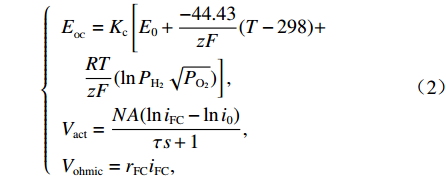



























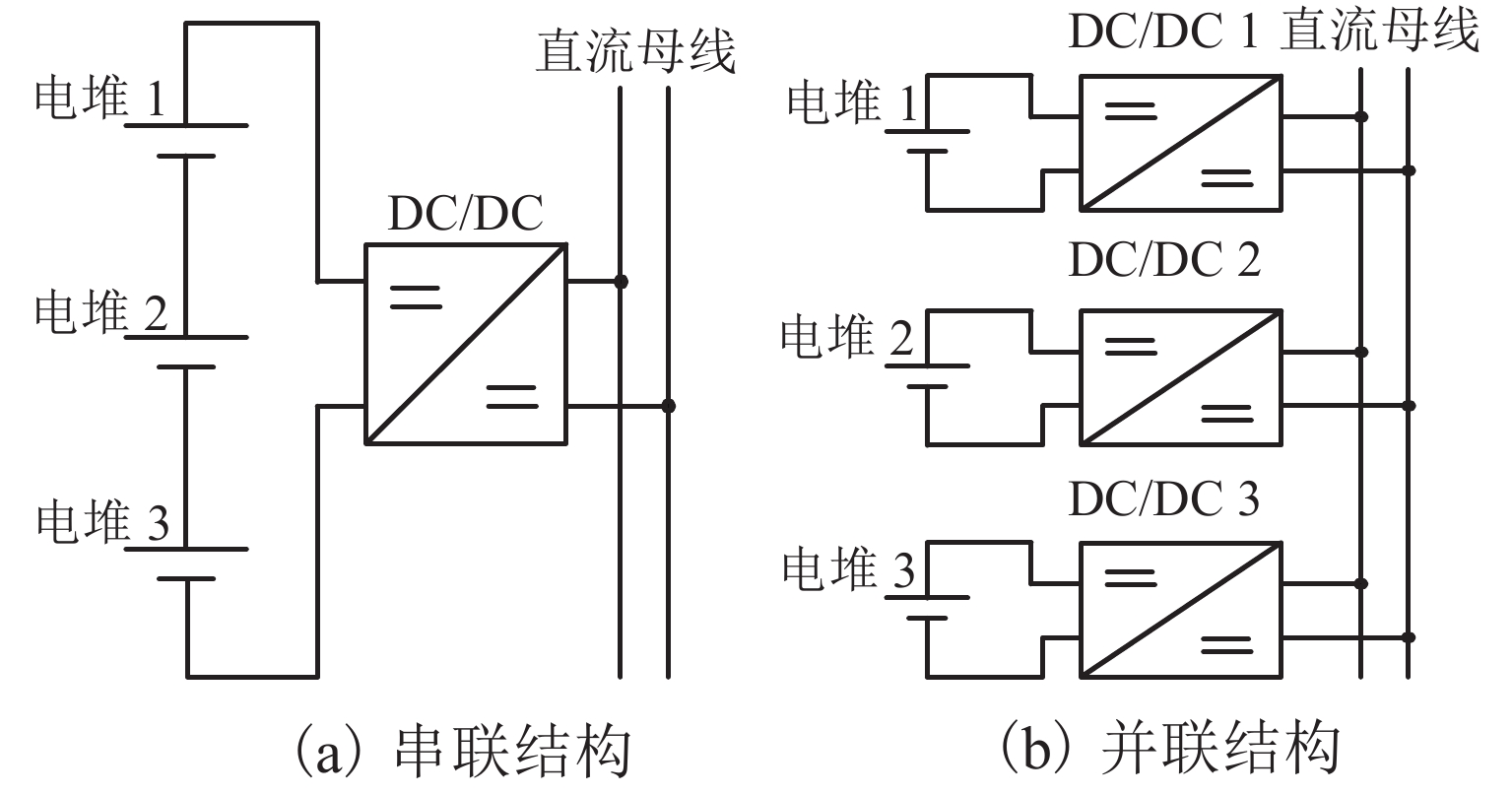
 下载:
下载:
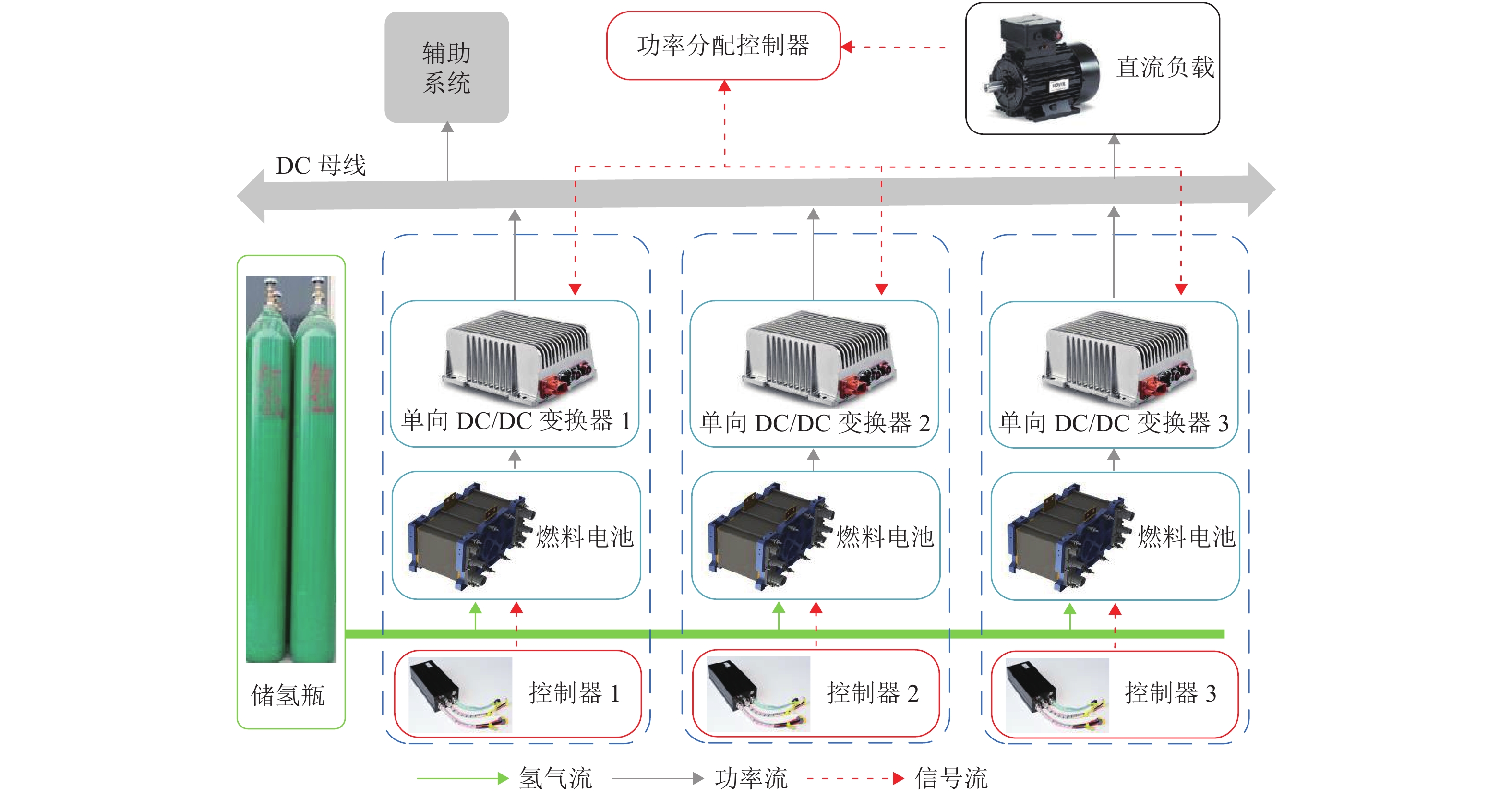
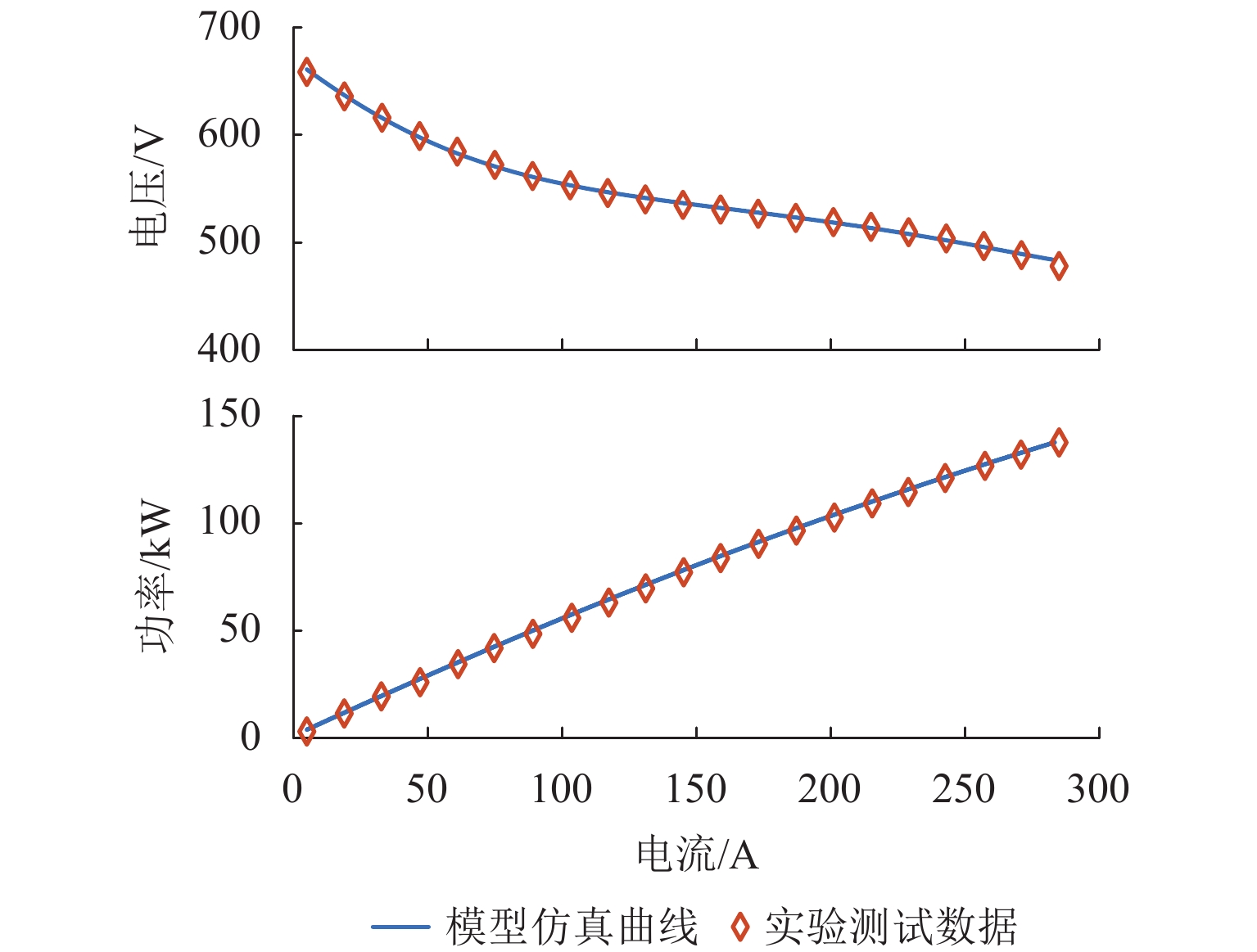
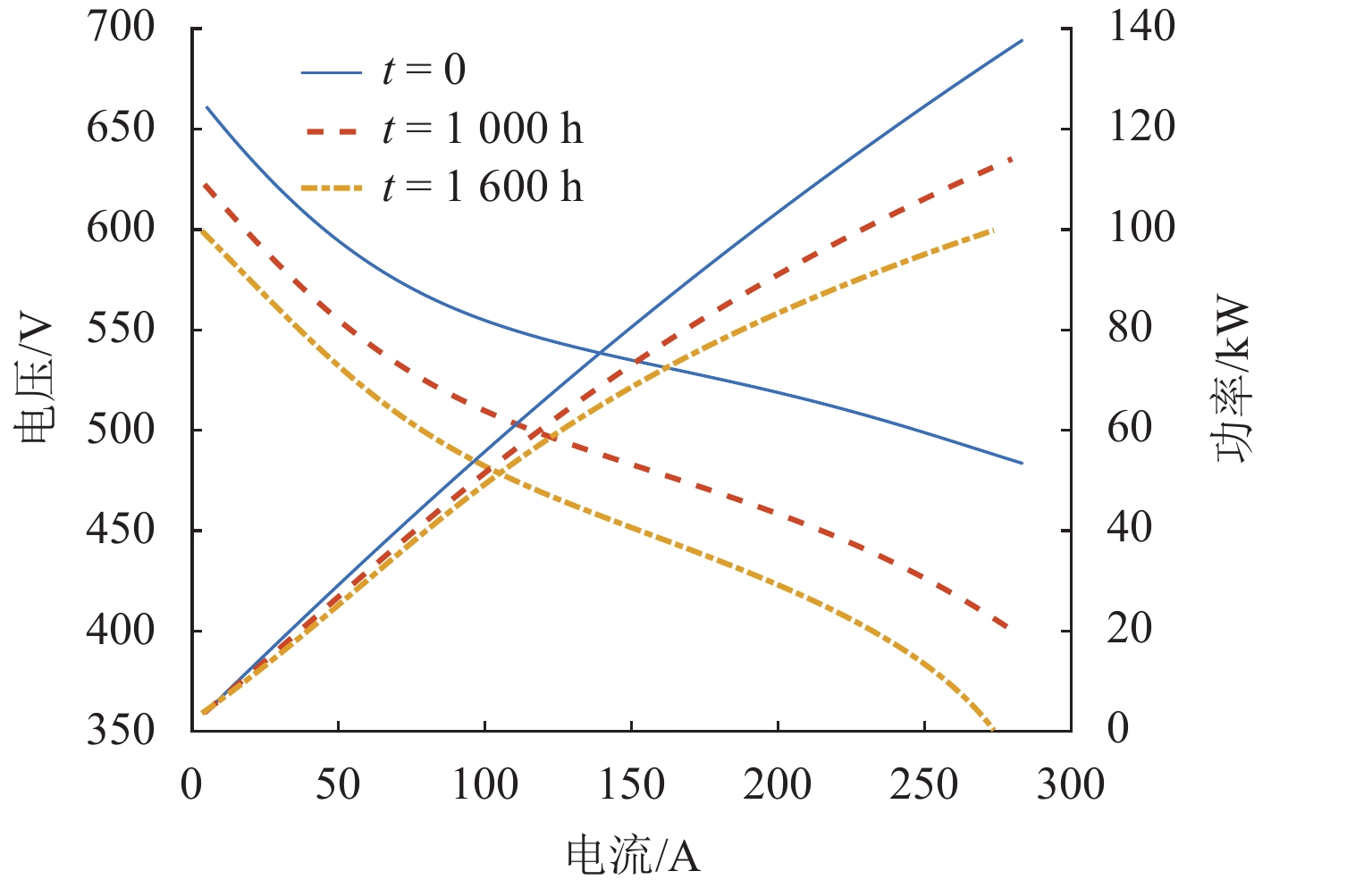

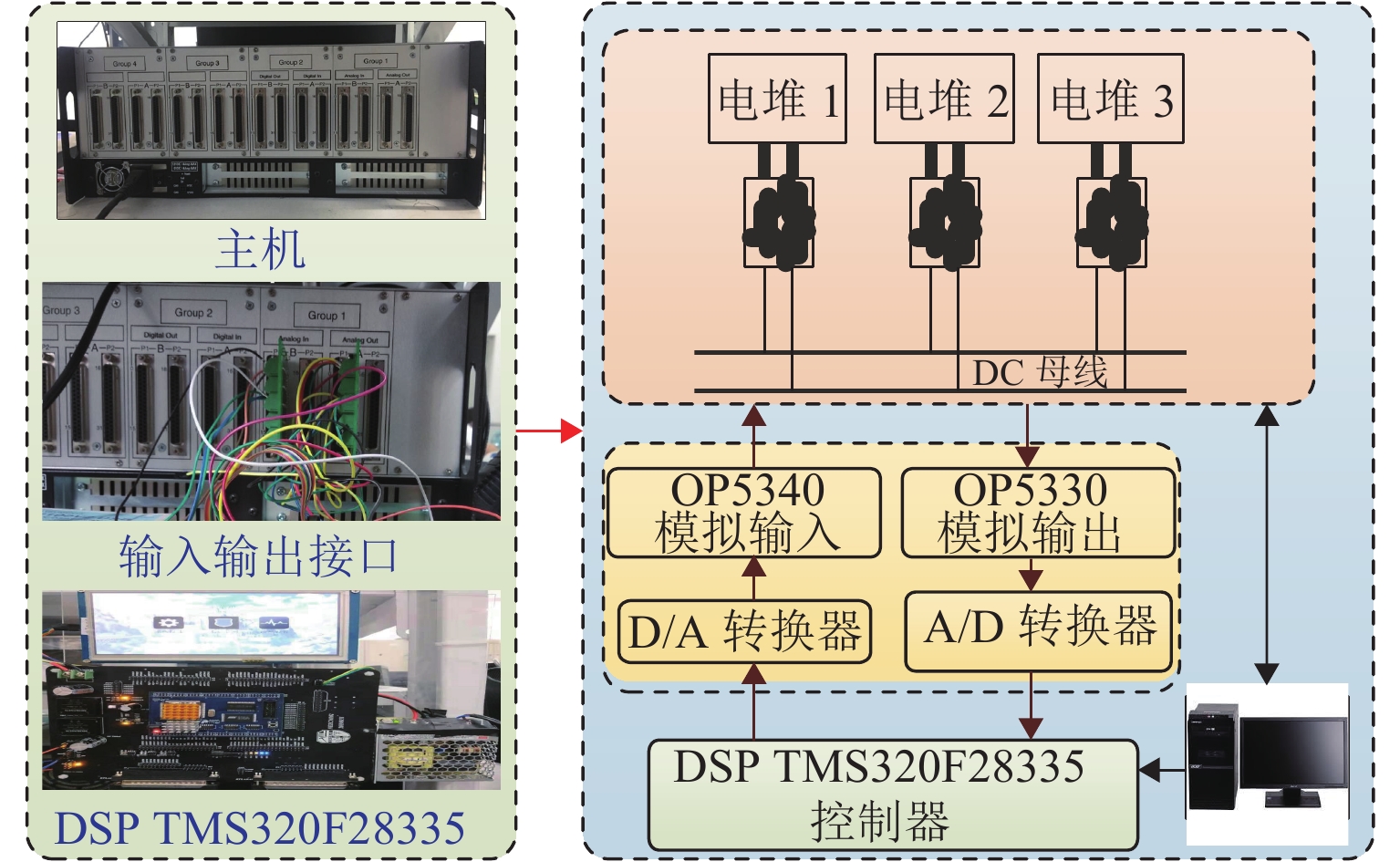

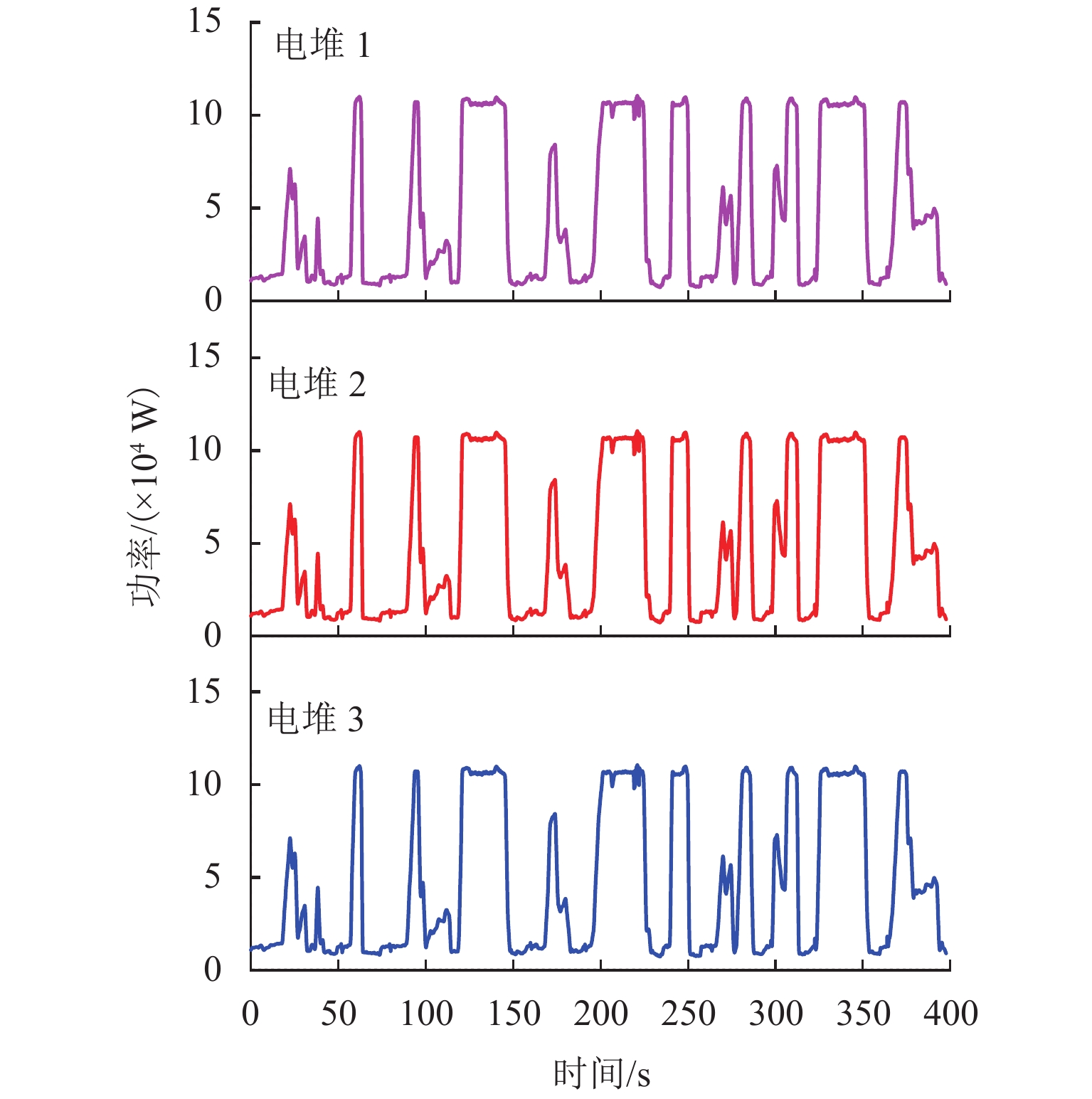
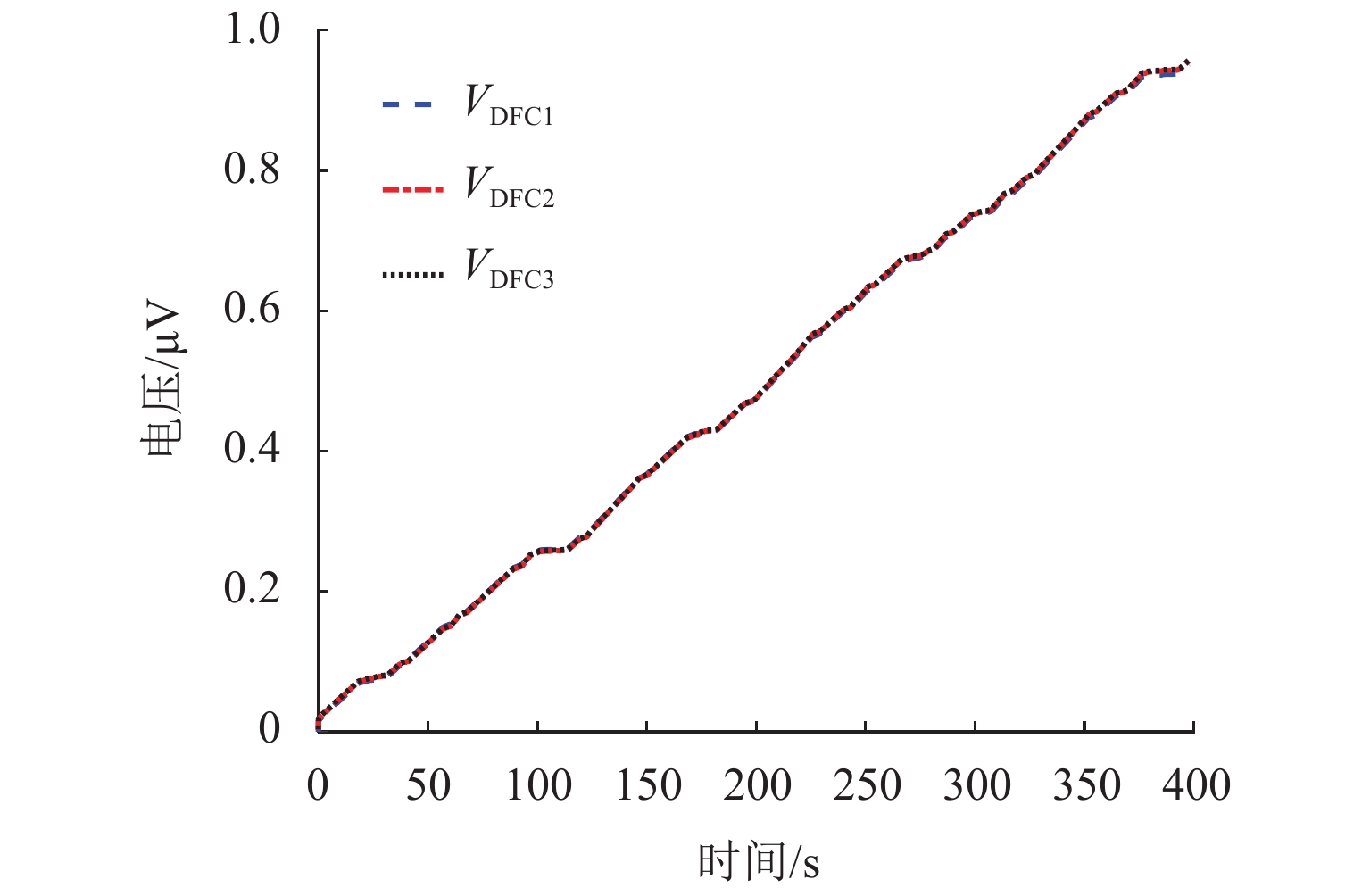
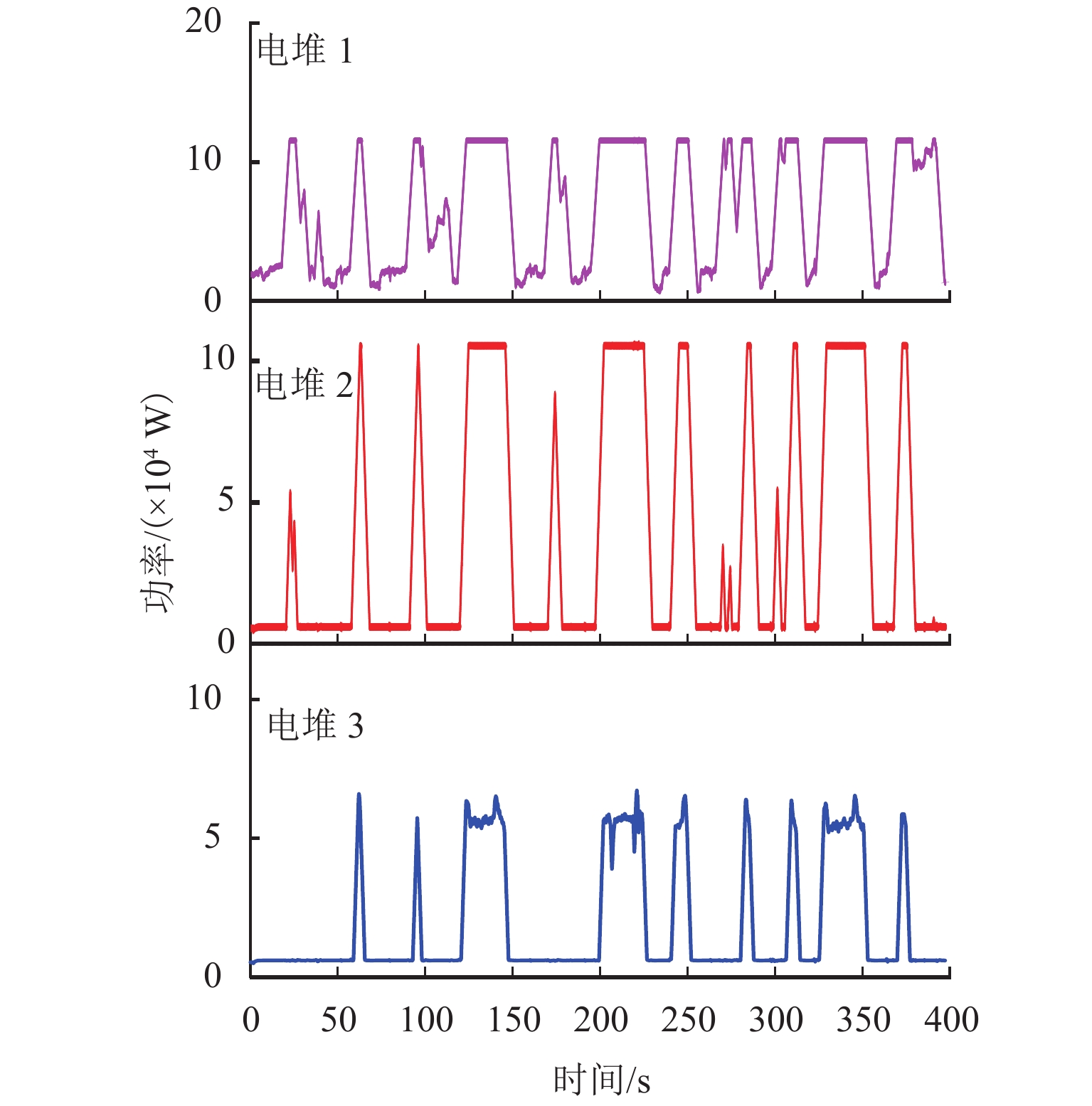
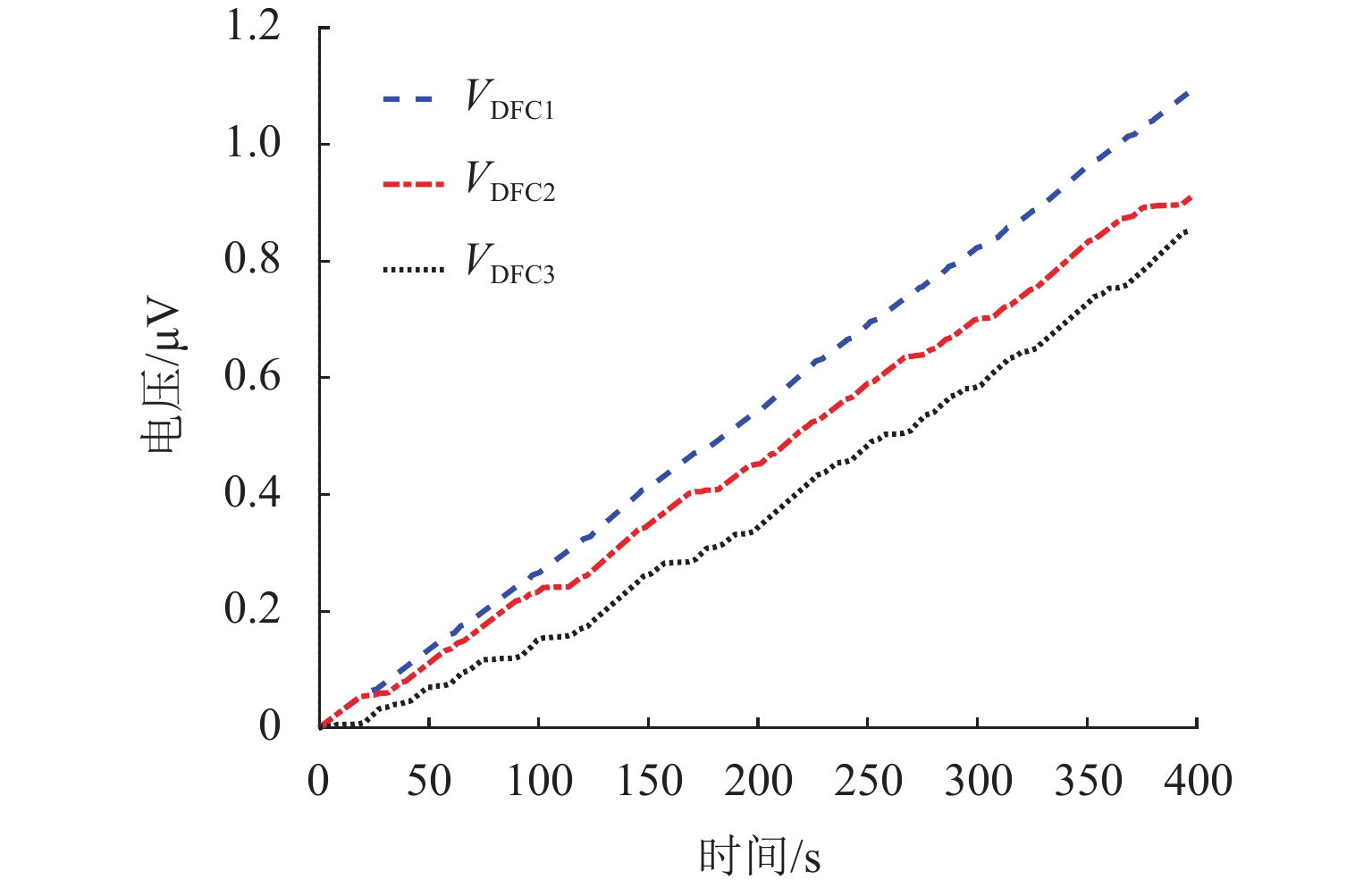
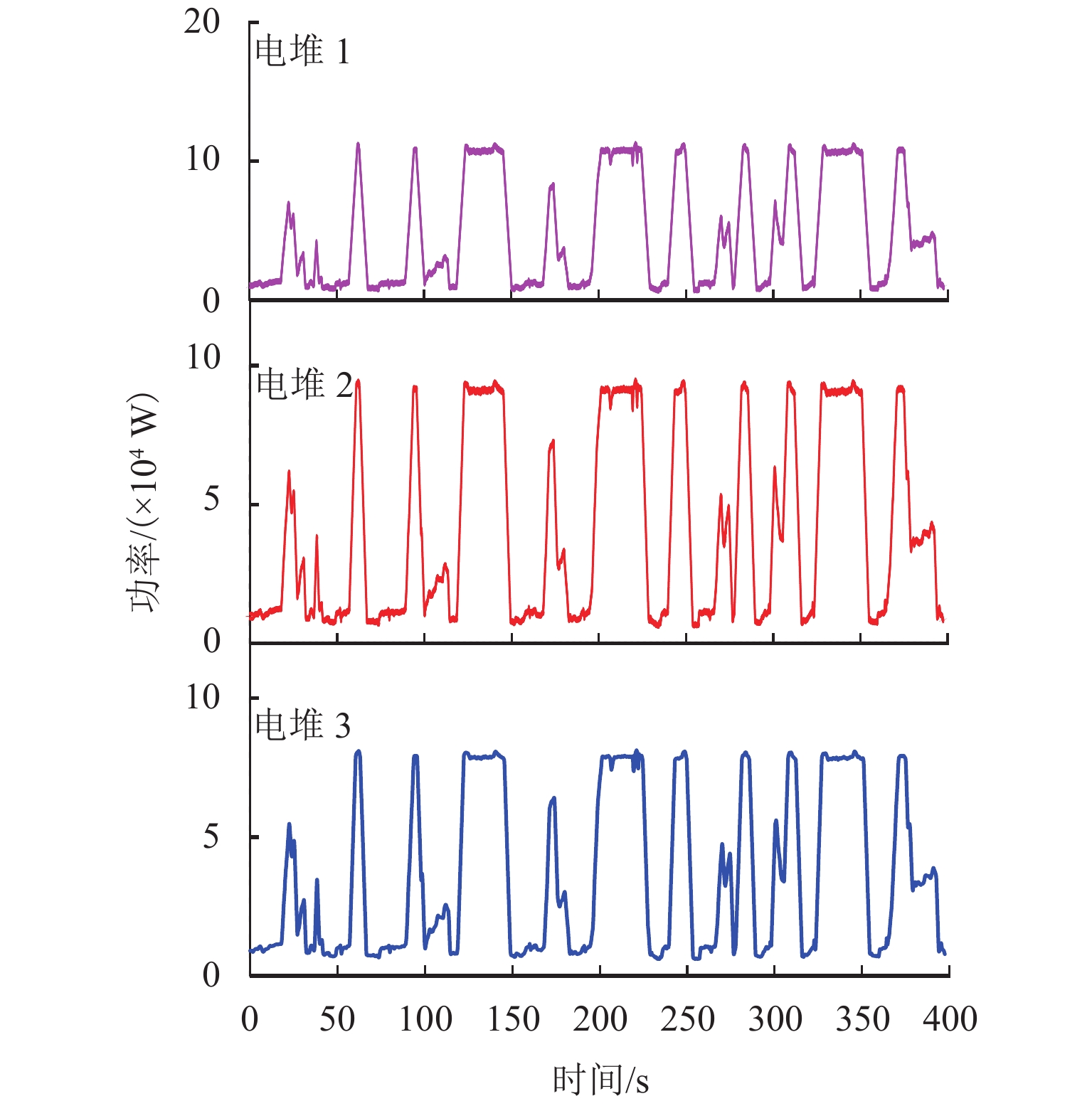
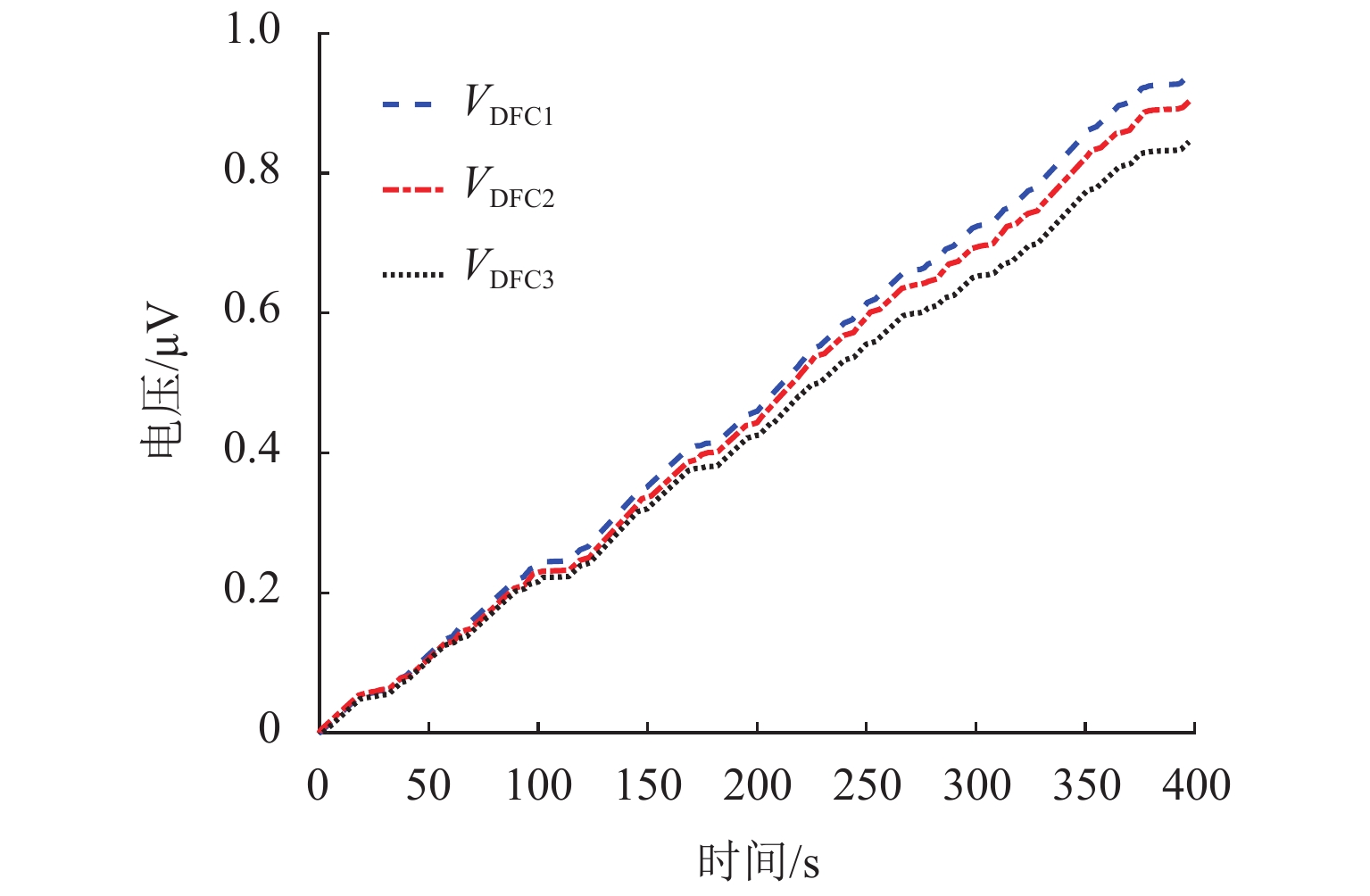
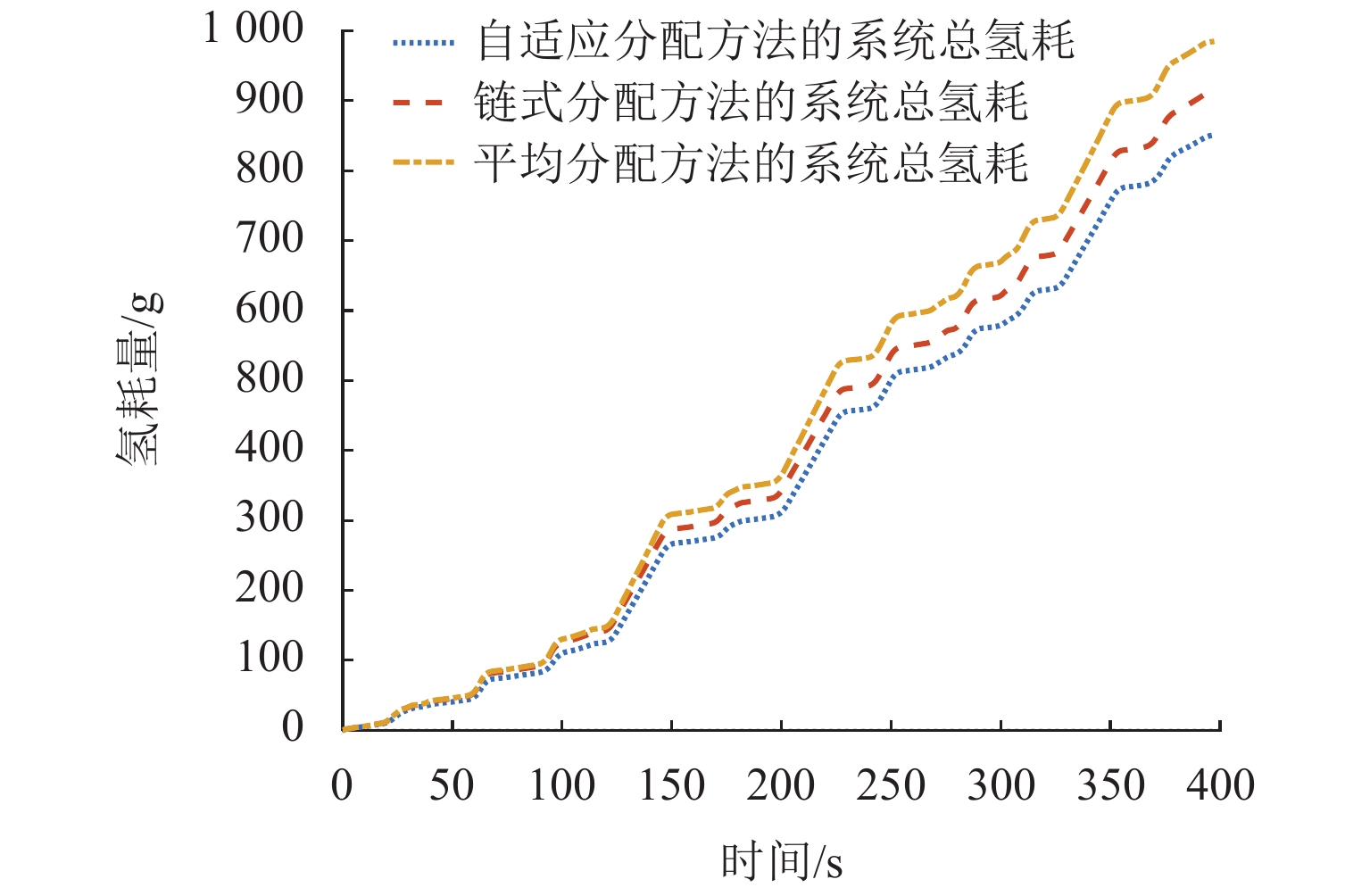
 百度学术
百度学术














